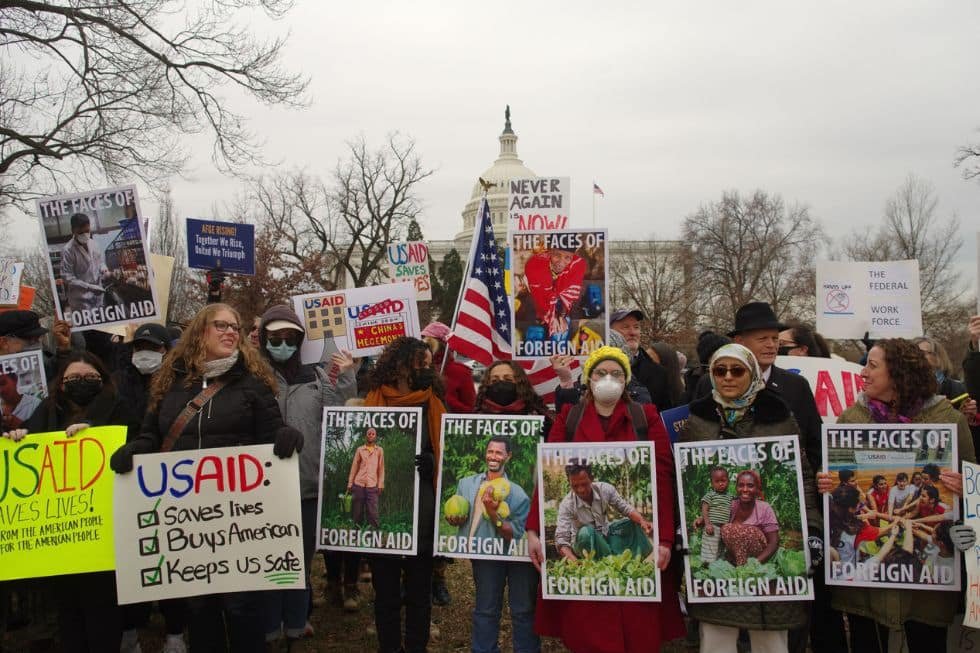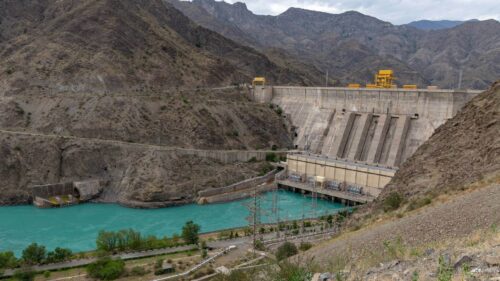The gutting of the United States Agency for International Development (USAID) has sent shockwaves through the global development community, particularly in environmental protection and climate finance. USAID was an undisputed leader in global sustainability efforts. According to a 2023 report to Congress, USAID provided $375 million to international biodiversity programs in 60 countries and $318 million to forestry investments.
Though a public entity, USAID played a leading role in advancing sustainable development, accounting for nearly one-third of the US climate financing and a fifth of spending by the developed world. The vanishing of USAID has created a gap in global sustainability, which, in the spirit of saving US dollars, has cost gains of the burgeoning climate finance market and losses for existing projects spurring capital growth.
The key element in spurring private sector involvement is USAID’s facilitation of blended finance contracts. Blended finance is the use of capital from public or philanthropic sources to increase private sector investment, and climate-blended finance has contributed immensely to global development.
From 2021 to 2023, 60% of climate-blended finance investments generated local employment, and 26% of these projects have targeted climate-smart industries and infrastructure. USAID’s Feed the Future initiative alone facilitated $4.5 billion in investments and loans to the agriculture sector, generating $10.5 billion in sales for small and mid-sized businesses. These are multifaceted wins: environmental, economic and social.
Climate resilience is fiscal prudence
Investing in climate resilience is also a tool to prevent fiscal losses. The United Nations estimates that every $1 invested in risk reduction and prevention saves up to $15 in post-disaster recovery. In February 2025, the Institutional Investors Group on Climate Change released a Climate Resilience Investment Framework, offering an actionable guide to help investors understand climate action and its impact on financial returns. This framework illustrates how smart climate investments can safeguard long-term business models through this lens.
USAID has been a catalyst for private sector involvement in climate and development projects. One of its flagship programs, INVEST, launched in 2017, facilitated over $1.61 billion in private capital across 14 sectors, including climate, clean energy and agriculture, among others, through hundreds of public-private partnerships. By lowering barriers to entry, this initiative demonstrates the capability of public entities like USAID to mobilize private capital in high-impact areas.
Through 2018, USAID has brought the private sector into 2,300 Global Development Alliances (public-private networks supporting the implementation of projects in developing countries) that are expected to leverage more than $43 billion in non-US government funds towards US objectives. For instance, USAID, Unilever and EY launched the Circle Alliance in 2024, a $21 million initiative to invest in small businesses in the plastics and packaging value chain across Asia. These collaborations demonstrate how public funding can unlock scalable, sustainable and profitable solutions to global issues.
Blended finance yields measurable results both abroad and domestically. In developing regions, early investments in clean technology can open new profitable markets. Cambodia is a prime example of a developing market for renewable energies. In 2016, two private investors, ADB and Sunseap Asset Co., utilized blended-finance mechanisms with the Cambodian government that financed Cambodia’s first utility-scale solar project, generating 110 MW of energy.
This single project lit the signal for a surge in renewable energy development, catalyzing more than $70 million in blended finance and over $1 billion in solar power infrastructure by 2023 with a combined capacity of around 800 MW. This lack of existing market snowballed into a national energy transition and a resulting new market.
Blended finance powers sustainable growth
These climate-related projects, and USAID as a whole, have long faced criticisms for inefficiency and unnecessary spending. In February, the Trump admin justified cuts to USAID in a February White House press release as a means to reduce wasteful spending; however, this rationale ignores proven financial gains of blended finance.
Blended finance initiatives align with growing market interest in climate-focused initiatives, creating capital while contributing to several sustainable development goals (SDGs) outcomes. Loss of USAID leadership risks undermining what could be incredible financial and developmental gains.
Attacking USAID as a harbinger of wasteful spending does not hold water when compared to other areas of the US budget. The US Army’s 250th Anniversary parade on June 14th — just months after budget cuts — was estimated to cost $25–$45 million. The Transportation Security Administration’s annual budget is about $11.8 billion despite missing 95% of mock explosives and weapons in security checkpoints during undercover tests.
Allocation to the US military has long been accused of taking up too much of the federal budget, with the United States not only spending more on its military than any other country in the world, but exceeding the combined spending of the next nine countries with the largest defense expenditures. The US military has never once passed a financial audit, meaning this money has never even been fully accounted for.
Misplaced fiscal priorities undermine climate leadership
The idea of defunding any of these departments would be considered unthinkable and dangerous to many Americans and lawmakers. Instead of a complete defunding and dismantling, reforming USAID with those internal to the agency working with the administration would have been a more viable move with less loss.
The abrupt dismantling of USAID leaves a leadership vacuum. Private investors and philanthropists anchored by USAID are left without alternative strategies, guidance or budgeting. Existing projects are left in limbo, many have been axed completely and would-be investors are becoming deterred by a lack of long-term vision. Climate finance, not long ago, was emerging as the wise business decision, but is now shrouded in uncertainty.
[Kaitlyn Diana edited this piece.]
The views expressed in this article are the author’s own and do not necessarily reflect Fair Observer’s editorial policy.
Support Fair Observer
We rely on your support for our independence, diversity and quality.
For more than 10 years, Fair Observer has been free, fair and independent. No billionaire owns us, no advertisers control us. We are a reader-supported nonprofit. Unlike many other publications, we keep our content free for readers regardless of where they live or whether they can afford to pay. We have no paywalls and no ads.
In the post-truth era of fake news, echo chambers and filter bubbles, we publish a plurality of perspectives from around the world. Anyone can publish with us, but everyone goes through a rigorous editorial process. So, you get fact-checked, well-reasoned content instead of noise.
We publish 3,000+ voices from 90+ countries. We also conduct education and training programs
on subjects ranging from digital media and journalism to writing and critical thinking. This
doesn’t come cheap. Servers, editors, trainers and web developers cost
money.
Please consider supporting us on a regular basis as a recurring donor or a
sustaining member.
Will you support FO’s journalism?
We rely on your support for our independence, diversity and quality.








Comment